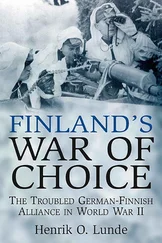Before submitting his more detailed memorandum to the War Cabinet on September 29, Churchill asked the Naval Staff to reconvene the committee on iron ore and look over his draft memorandum in order to insure that he was not completely off the mark. He wrote, “It is no use my asking the Cabinet to take the drastic action suggested against a neutral country unless the results are in the first order of importance.” He had heard that the shipment of iron ore from Narvik was much reduced and that the Germans were stockpiling ore in southern Sweden for shipment to Germany during the winter months. He wanted to know if these statements were true and stated, “It would be very unpleasant if I went into action on mining the Norwegian territorial waters and was answered that it would not do the trick.” 2
Since Churchill did submit his memorandum to the War Cabinet on September 29, it seems that the Naval Staff dispelled some of his concerns. The memorandum takes note of the decline in shipments from Narvik, but urges more dramatic action if they start moving again. Churchill concluded that the prevention of the Narvik supplies would greatly reduce Germany’s power of resistance. By December 1939, he tried to convince his reluctant colleagues that the interruption of the ore coming through Norway could be decisive for the outcome of the war.
Churchill was a man of vast knowledge and experience; however, it is difficult to square his stated views with realities. It was obvious to Churchill and his colleagues that mining Norwegian waters would stop only that portion of iron ore shipped via Narvik. Other efforts were required to achieve a great reduction in Germany’s warmaking power. However, stopping iron ore shipments along the Norwegian coast was for Churchill only a means to an end. It became obvious in the months after his initial flurry of memoranda dealing with the iron ore issue that he and a few other members of the British Government wanted to expand the war into Scandinavia, particularly Norway. To accomplish this, Germany had to be provoked. The mining of Norwegian territorial waters would serve as that provocation. The expected German counteraction presented possibilities for easy military victories because of the vast superiority of the British fleet, and would give the Allies reasons to occupy various parts of Norway. This would accomplish four important goals: 1) Stop the flow of ore along the coast; 2) Make the blockade of Germany more effective; 3) Increase the air threat to German Baltic and North Sea harbors; and 4) Bring Sweden under Allied influence. While these points remained unstated at the outset, they were undoubtedly the strategic reasons for the preoccupation with the flow of iron ore along the coast, the stoppage of which would only have a minor effect on German war industry.
The belief that stopping German ore shipments from Sweden would be an immediate and decisive factor in the war was overstated. Germany’s import of high-grade iron ore from Sweden came mostly from deposits in the Kiruna and Gällivare regions of northern Sweden, while a small amount came from mines in central Sweden. From May to November, the ore from the Kiruna/Gällivare region reached Germany by sea via the port of Luleå at the northern end of the Baltic Sea (Gulf of Bothnia). This port was normally ice-bound from December to April and the ore was then shipped by rail to the ice-free Norwegian port of Narvik. It was estimated that the Germans imported 22 million tons of iron ore in 1938. About nine and one-half million tons came from sources that were no longer available to Germany after the outbreak of war. The Allies estimated that another nine million tons came from Sweden. 3The scheduled deliveries to Germany for 1940, as specified in the German-Swedish agreement, were actually 10 million tons. The Swedes considered it necessary to ship two to three million tons of this commitment through Narvik.
The Germans were prepared to ship about three million of the 10 million tons via rail to the ice-free port of Oxelösund or other ports in southern Sweden, provided arrangements were made for storage during the winter months. 4This would almost remove their reliance on Narvik as a shipping port. Churchill’s plans to sever the ore shipments from Narvik by mining Norwegian territorial waters would therefore have little impact on Germany’s receipt of Swedish iron ore, while risking driving Norway into the German camp. Churchill’s plans also risked alienating public opinion in neutral countries, particularly in the United States.
One reason the Allies believed that the imports of iron ore from Sweden were all-important to Germany’s war industry can be traced back to statements made by the prominent German industrialist Fritz Tyssen, who lived in exile in Switzerland. He concluded that Germany would not be able to wage active war for more than one year if the supplies from Sweden were cut off. The Ministry of Economic Warfare appears to have endorsed Tyssen’s view without a detailed examination of its validity.
The later years of the war demonstrated that the use of scrap iron, German domestic supplies of low-grade ore, and stockpiling had been severely underestimated. The German capture of the Lorraine fields in May 1940 reduced the importance of Swedish ore. However, while there is little doubt that a successful Allied invasion and seizure of the iron ore districts in northern Sweden would have led to acute shortages of high-grade ore in Germany, the likelihood of driving Norway, Sweden, and possibly the Soviet Union into the German camp was a high price to pay for this advantage.
The Winter War and Contending Plans
The outbreak of the Winter War between Finland and the Soviet Union on November 30, 1939 put the Scandinavian question in a new light. There was a strong desire in both France and Britain to help the Finns with volunteers and materiél. The only possible route for such help was through Norway and Sweden. The Allied Supreme War Council decided on December 19, 1939 to send help to Finland if requested.
The Allied governments recognized that this new situation would give them a chance to interrupt Germany’s ore supplies. It would certainly be easy to prevent shipment of iron ore to Germany through Norwegian waters if Narvik became an Allied supply base for the Finns. However, Churchill was still arguing for the more limited action of mining Norwegian territorial waters. He hoped that the consequent interruption of iron shipments would lead to German counter-action and the opening of a new front where Allied naval superiority would lead to military victories. Furthermore, the British War Cabinet believed that German counter-action was likely to add Norway and Sweden to the Allied camp.
Chief of the Imperial General Staff, General Edmund Ironside, was even more ambitious. He argued for the occupation of the Swedish mining districts. At the same time, he argued against mining Norwegian territorial waters since that would make a move against Narvik and the Swedish iron districts more difficult and could push the Norwegian government into alliance with Hitler. While this was a logical assumption, it appears that General Ironside did not recognize that direct aid to the Finns through Scandinavia—against the wishes of the Scandinavian states—and the occupation of the iron ore districts in Sweden could have a far graver repercussion, by pushing Josef Stalin, the Russian leader, into backing Hitler. To assume that the Swedish and Norwegian governments would acquiesce in the use of their territories for direct aid to the Finns, particularly since they were well aware of the real objective of the operation, was unrealistic, as events were to prove.
Ironside’s plan, if successful, might stop Germany’s importation of Swedish ore, but it was ill-founded. In December 1939, a report from the intelligence division of the British War Office estimated that Germany would need 25–30 divisions for a successful invasion of Sweden and Norway. 5In spite of this, Allied war planners never considered using anything near that force level in their own plans in Norway and Sweden. At the most, they considered that only a few brigades were required and, if the Germans intervened, a force of no more than 150,000. Part of this force was also intended to aid the Finns in their campaign against the Soviet Union.
Читать дальше







![Джонатан Димблби - Barbarossa - How Hitler Lost the War [calibre]](/books/385421/dzhonatan-dimblbi-barbarossa-how-hitler-lost-the-w-thumb.webp)
![Traudl Junge - Hitler's Last Secretary - A Firsthand Account of Life with Hitler [aka Until the Final Hour]](/books/416681/traudl-junge-hitler-s-last-secretary-a-firsthand-thumb.webp)



